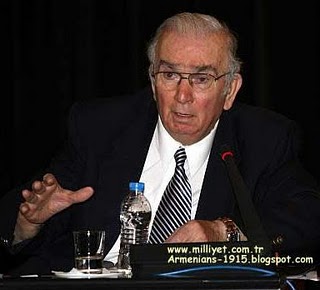This is a 702-page monumental book with everything that one may want to know about the alleged Armenian genocide and the Turkish-Armenian relations over the years, mostly based on non-Turkish sources. It is also a must reading for anyone who wants to write about this controversial issue and plans to visit Armenia.
This is the 3rd and the final part of my review which took a while to complete due to its sheer volume. Part I of my review covered Chapters 1 through 5 and Chapter 16, and Part II covered Chapters 6, 7, 9 and 10 (Total 32 Chapters.) This part will cover the remaining chapters and an overall assessment of this valuable book.
Chapter 11, Oilfield Freedoms gives a brief description of the involvements of US, England, Germany and Russia in securing the rights for oil drilling starting as early as 1909 and extending to 2003 when the US invaded Iraq, more for oil than bringing democracy to the oil-rich country.
Chapter 12, Waging War for Money Without Money begins with the famous saying by Nopelon, ‘’To win a war, you need three things: Money, Money, Money.’’ Then the author makes reference to the collection of money by Christian countries supposedly to help Armenian refugees, which is basically used to buy arms, ammunition, even three aeroplanes.
Chapter 13, Some Remarks on Arms and Armies, writes about a number of soldiers or other fighters in different fronts of wars, or rebels behind the front lines. One of the soldiers described is Gen Antranik, referred to as Turkish-Armenian leader, who was responsible for the destruction of many Moslem villages and towns and the death of hundreds and thousands of Moslems. A book on the life of Antranik states that Antranik was a Russian. After the war, Antranik settles in California, whose life is also covered in a story by William Saroyan, which is not mentioned in this book.
Chapter 14, Relocations, presents the full text of the Ministry of Interior’s May 30, 1915 law, ‘’Regulation related to Settlement and Boarding and Lodging and other Affairs of Armenians Relocated to Other Places Because of War Conditions and Emergency Political Requirements.’’ Many Armenians and their supporters claim that 1.5 million Armenians were killed during the relocations. Aya shows that this is a fabricated nuömber since the entire population of the Armenians was less than 1.5 million. Many of those who were relocated, more than half, survived the war and settled in newly founded Armenia or other countries including the US.
Chapter 15, Population provides valuable information on this controversial issue with information from foreign sources which shows that the claims of the Armenians on the number of Armenians killed is false, which is stated to be 1.5 million, sometimes as 2.0 million. With various sources reporting the population of Armenians within the Ottoman boundaries before 1915 give numbers between 1,4 million and 1.5 million (according to Toynbee) this is impossible. Living Armenians 918 – 1922 is reported to be between 880,000 and 1,414,000 (according to joint US Senate/Congress Report No 192.)
Chapter 17, Proven Forgery and Distorted History reveals that Armenians use Toynbee’s book as propaganda material, never mentioning the fact that he wrote the ‘’The Blue Book’’ not as a historian but as British propaganda material. There is also much information on Franz Werfel and his infamous book, ‘’40 Days on Musa Dagh’’, who admitted later that he had been conned by forgeries, and Aram Andorian, the father of all forgeries. Aya ends this chapter with a reference to the House Resolution in the US Senate, that was eventually withdrawn, which has all the forgeries mentioned.
Chapter 18, About Charity and Relief Organisation, tells us about the power and the influence of relief organisations in the US and Britain (should be referred to as Great Britain), who played a major role during the relocations. Information on the activities of the Near East Relief, which continues today as Near East Foundation, is quite revealing which disputes the Armenian claims on the number of Armenians relocated and lost their lives.
Chapter 19, Famine and Epidemics, Chapter 20, The Armenian Republic (short-Lived and Short-Sighted), Chapter 21, Dashnak’s Paradoxical Dedication to Czarist Russia, Britain & France, Soviet Russia, Nazi Germany and USA presents valuable information which was not available before.
Chapter 22, Was Katchaznuni Wrong or Prophetic, begins with a statement that ‘’unfortunately, there are not too many Armenian dignitaries who could analyze past events in a realistic manner. The Diaspora press and Dashnak brainwashing based on the pretext that ‘they are always right and victimize by the villains’’’. This chapter reveals the declaration by the first Prime Minister, Katchaznuni, who admits the atrocities committed by the Dashnaks and the Ottomans had every right to take the necessary actions against them.
Chapter 23, Excerpts from A.A. Lalaian’s Editorial presents information on the editorials of A.A Lalaian who was a Soviet historian of Armenian origin.
Chapter 24, The Sucess of Armenian Lobbies and Diaspora Organisations should be read by everyone trying hard to establish a Turkish lobby and web sites mainly to counteract the anti-Turkish attacks in many countries around the world.
‘’The genocide of Truth’’ does a great service by showing that what happened during the terrible war years was not a genocide. The west and the young generation of Armenians have been deceived through lies, fabricated stories and distorted historical facts which have created hatred against the Turks. Recently a group of intellectuals living in different countries published a ‘’White Paper’’, presenting a concise summary of the Armenian issue for the benefit of reporters, writers, researchers, students and interested common people who know very little about the issue. Hopefully, the distribution of the document will start soon as some Turkish American organisations, such as ATAA, has approved the document.
Yuksel Oktay
6 Septemeber 2008, Saturday
Istanbul
(Turkey won the 2010 World Cup soccer match between Turkey and Armenia 2-0.)

